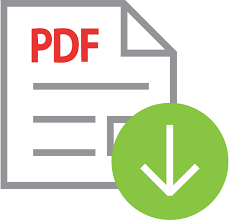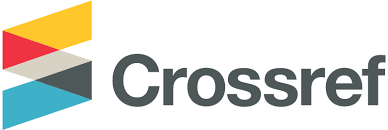Language Style Adaptation in Political Discourse: Akbar Faizal and Peter F. Gontha
 ), Havid Ardi(2),
), Havid Ardi(2), (1) Universitas Negeri Padang
(2) Universitas Negeri Padang
 Corresponding Author
Corresponding Author
Copyright (c) 2025 Nurhasanaa Khairunnisa
DOI : https://doi.org/10.24036/ell.v14i1.133009
Full Text:
 Language : en
Language : en
Abstract
This study examines the language styles used in the Akbar Faizal Uncensored podcast, focusing on how Akbar Faizal and Peter F. Gontha communicate. Using a descriptive quantitative method, the research analyzes five language styles based on Martin Joos' classification: frozen, formal, consultative, casual, and intimate. From the analysis, the most frequently used language style by Akbar Faizal is the casual style 42.9%, while Peter F. Gontha predominantly uses the formal style 36.3%. Additionally, the consultative style is also commonly employed by both, with a relatively balanced frequency Akbar 36.1%, Peter 34.6%. The frozen style was used only once by Akbar Faizal 0.7% and not at all by Peter F. Gontha, while the intimate style was absent in this interaction. The study also finds a level of incongruence between Akbar Faizal and Peter F. Gontha, particularly in the use of the consultative style, which is interactive yet professional. Although Akbar tends to use a more casual style, Peter maintains formality in his speech, creating a contrast in their communication flow. Overall, the incongruence in language styles between Akbar Faizal and Peter F. Gontha adds complexity to the dynamic of the conversation, but it still ensures a structured yet engaging political discussion.
Keywords
References
Ansari, N. M. S., & Padmadewi, N. N. (2022). Language style used by President Joko Widodo in interviews with hosts of three YouTube channels. Lingua Scientia, 29(1), 33–44. https://doi.org/https://doi.org/10.23887/ls.v29i1.36976
Ayu, P., & Senja, A. (2023). Language Style of Advertisements. 17(1), 62–68. https://doi.org/https://doi.org/10.24843/e-jl.2023.v17.i01.p08
Azhar, A., & Padang, U. N. (n.d.). STAND-UP COMEDY SHOWS. 12(1).
Berry, R., Fox, N., & Llinares, D. (2018). Podcasting (D. Llinares, N. Fox, & R. Berry (eds.); Vol. 151). Springer International Publishing. https://doi.org/10.1007/978-3-319-90056-8
Biber, D. (1993). Quantitative Methods in Corpus Linguistics: A Study of Variation in Discourse. Cambridge University Press.
Biber, D., & Conrad, S. (2019). Register, Genre, and Style. In Register, Genre, and Style (Second Edi). Cambridge University Press. https://doi.org/10.1017/9781108686136
Brown, P., & Levinson, S. C. (1987). Politeness: Some Universals in Language Use. Cambridge University Press.
Cameron, D. (2007). The Myth of Mars and Venus: Do Men and Women Really Speak Different Languages? Oxford University Press.
Chaika, E. (1934). Language: The Social Mirror (Third Edit). Heinle & Heinle Publishers.
Coates, J. (2016). Women, Men and Language: A Sociolinguistic Account of Gender Differences in Language. In Routledge (Vol. 11, Issue 1). http://scioteca.caf.com/bitstream/handle/123456789/1091/RED2017-Eng-8ene.pdf?sequence=12&isAllowed=y%0Ahttp://dx.doi.org/10.1016/j.regsciurbeco.2008.06.005%0Ahttps://www.researchgate.net/publication/305320484_SISTEM_PEMBETUNGAN_TERPUSAT_STRATEGI_MELESTARI
Coupland, N. (2007). Style. In R. Mesthrie (Ed.), Style: Language Variation and Identity. Cambridge University Press. https://doi.org/10.1017/CBO9780511755064
Creswell, J. W. (2018). Research Design: Qualitative, Quantitative, and Mixed Methods Approaches. In Sage Publications (5th Editio). https://doi.org/10.1163/22118993-90000268
Crystal, D. (2008). A Dictionary of Linguistics and Phonetics (Sixth Edit). Blackwell Publishing.
Eckert, P., & McConnell-Ginet, S. (2003). Language and Gender. In Cambridge. Cambridge University Press.
Fishman, J. A. (1972). The Sociology of Language: An Interdisciplinary Social Science Approach to Language in Society. Newbury House Publishers.
Hidayati, L., Syahputri, D., & Rangkuti, L. A. (2022). Analysis of Language Style in Novel Dialogue: the Maze Runner. EXCELLENCE: Journal of English and English Education, 2(2), 33–39. https://doi.org/10.47662/ejeee.v2i2.514
Holmes, J. (2013). An Introduction to Sociolinguistics. In Language (Fourth Edi, Vol. 70, Issue 3). https://doi.org/10.2307/416511
Holmes, J. (2015). Gendered Talk at Work: Constructing Gender Identify Through Workplace. In John Wiley & Sons. https://doi.org/10.1002/9780470754863
Indahsari, F. E., Rezeki, Y. S., & Rahmani, E. F. (2023). An Analysis of Language Styles Used by The Main Character in The Dialogues in Business Proposal Series. Journal of Scientific Research, Education, and Technology (JSRET), 2(4), 1710–1718. https://doi.org/10.58526/jsret.v2i4.287
Joos, M. (1967). The Five Clocks: A Linguistic Excursion into the Five Styles of English Usage. Harcourt, Brace & World.
Keraf, G. (2007). Diksi dan Gaya Bahasa (Seventeent). Gramedia Pustaka Utama.
Lakoff, G. (2004). Don’t Think of an Elephant Know Your Value! Chelsea Green Publishing Company.
 Article Metrics
Article Metrics
 Abstract Views : 49 times
Abstract Views : 49 times
 PDF Downloaded : 4 times
PDF Downloaded : 4 times
Refbacks
- There are currently no refbacks.
Copyright (c) 2025 Nurhasanaa Khairunnisa

This work is licensed under a Creative Commons Attribution-NonCommercial 4.0 International License.












